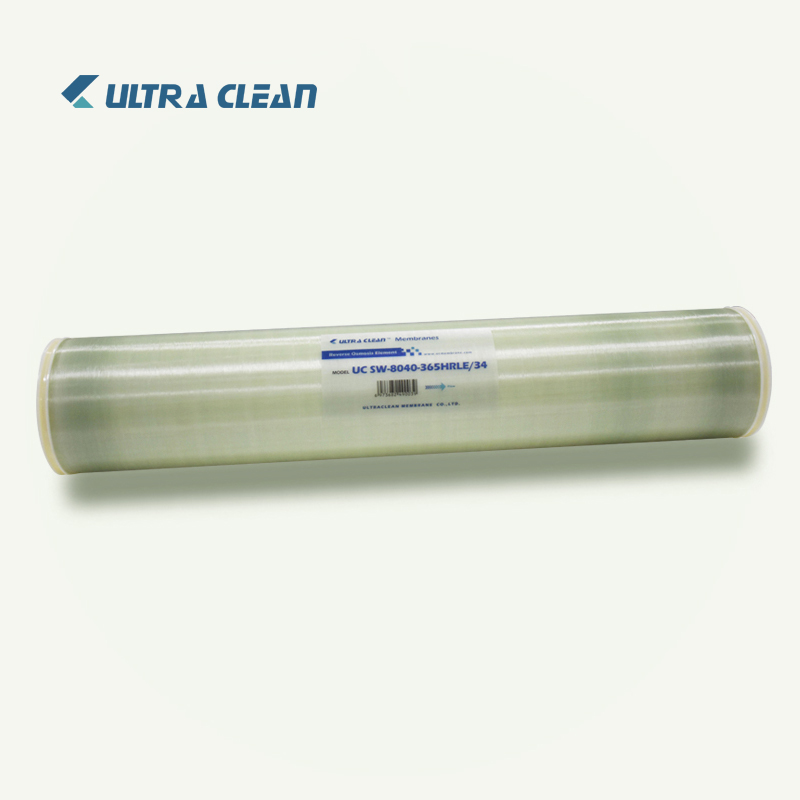Aug. 23, 2022
Environment
With the continuous development of the water treatment industry, more and more people are not unfamiliar with this industry, even some membrane products and water purification equipment, and are satisfied and recognized for the water purification effect of many membrane elements, such as some The brand's reverse osmosis membrane is more cost-effective, and the functions of each membrane element are different. This article will introduce you to the reverse osmosis membrane.
1. Features of reverse osmosis membrane:
It has high desalination rate, desalination effect is as high as 99.8%; high water yield, stable water quality; high chemical durability, pollution resistance; wide PH value range (PH 1~13); can withstand minor residual chlorine leakage accidents.
And it is a reverse osmosis membrane produced with new materials. It is suitable for desalination of brackish water with a salt content below 10000ppm, desalination of slightly polluted surface water, recycling of cooling cycle sewage, etc. It is widely used. There are sales, you can choose with confidence.

Second, the working principle of RO membrane:
The principle is to separate the pure water from the solution containing the solute with a semipermeable membrane that can only pass through water. At this time, the water on the pure water side spontaneously passes through the semipermeable membrane and enters the solution side. The water level on the solution side rises, a phenomenon known as osmosis. When the liquid level rises to a certain height, the pressure on both sides of the membrane reaches equilibrium, and the liquid level on the solution side no longer rises. At this time, there is a pressure difference on both sides of the membrane, which is called osmotic pressure. If a pressure greater than the osmotic pressure is applied to the solution side, the water molecules in the solution will be squeezed to the pure water side, this process is just the opposite of osmosis, we call it reverse osmosis. It can be seen from the reverse osmosis process that due to the action of pressure, water molecules in the solution enter pure water, the amount of pure water increases, and the solution itself is concentrated. The principle of reverse osmosis desalination is to apply a larger pressure than the natural osmotic pressure, so that the permeation direction is opposite, and the water molecules in the raw water are pressed to the other side of the membrane, so as to achieve the purpose of removing the salt in the water. This is the principle of reverse osmosis membrane desalination.
3. The influence of reverse osmosis membrane desalination rate is as follows:
Further reading:Reverse osmosis membrane desalination rate influence 1. The removal rate of inorganic ions is affected by the number of hydrated ions and the radius of hydrated ions. The larger the ionized ion radius, the smaller the ion radius, the easier the hydrated ion radius. Removal by reverse osmosis membrane, nitrate, permanganate, cyanide and hydrosulfide are not as easy to remove as chloride ion, and the removal rate of ammonium salt is lower than that of sodium ion.
2. For non-electrolytes, larger molecules are easier to be removed.
Wholesale Reverse osmosis membrane desalination rate affects 3. Gas easily permeates through reverse osmosis membrane, and the removal rate of ammonia, chlorine, carbon dioxide, hydrogen sulfide, oxygen and other gases is very low.
4. The removal rate of weak acids is low, such as boric acid and organic acids. Among organic compounds, the order of removal rate is: citric acid > tartaric acid > acetic acid, acetaldehyde > ethanol > amine > acid.
Reverse osmosis membrane desalination rate affects 5. Organic matter is easier to separate than inorganic matter.
Reverse osmosis membrane desalination rate affects 6. Electrolytes are easier to separate than non-electrolytes. For electrolytes, high charge separation is good.
Previous: Advantages of Garbage Sorting Machine
Next: None
Related Articles
If you are interested in sending in a Guest Blogger Submission,welcome to write for us!
All Comments ( 0 )